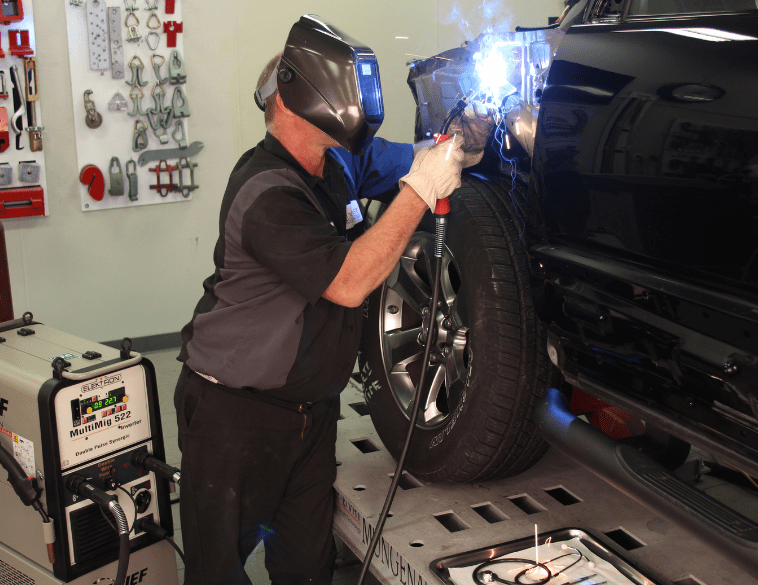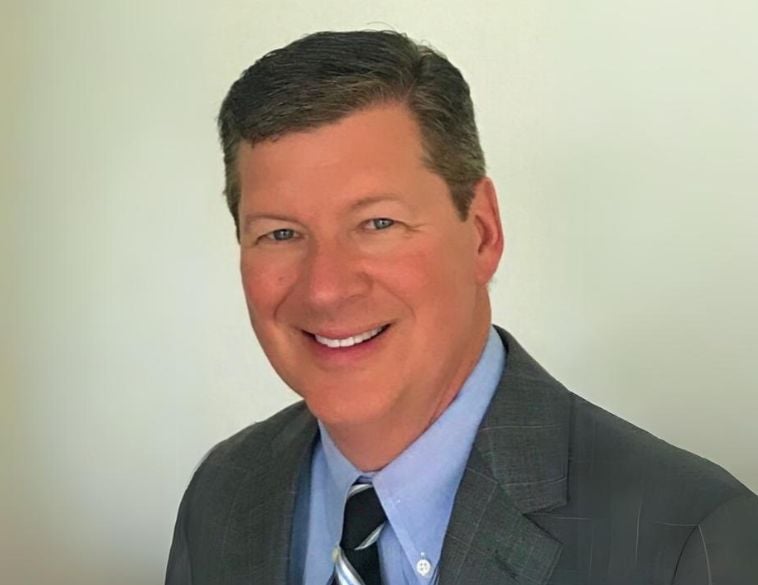With more aluminum-bodied and multi-material vehicles hitting the roads each day, collision repairers need to ensure they are on top of their game when it comes to fixing them.
From minor creases and scrapes to major structural repairs, knowing what the exact OEM procedures are to perform the repair is essential, as is cleanliness.
When dealing with multi-material vehicles that have aluminum hoods, steel fenders and ultra-high-strength steel safety cages and cabin/unibody structures, separation of the materials is absolutely essential.
According to Anouar Belganche, National Sales Manager, Canada; Norton St-Gobain, this includes not only having separate workstations within the shop to perform aluminum repairs but also that the tools you use are specifically for aluminum or specifically for steels.
When Ford introduced the first all-aluminum-bodied F-150 pickup as a 2015 model, there was a great deal of uncertainty around how these vehicles could be repaired and the investments shops had to make.
Specific labels
At the time, St-Gobain added specific labels for aluminum only repair tools to ensure they were used exclusively for aluminum repairs, avoiding the risk of contamination with other materials.
While it may seem like a very simple and obvious measure, in practice it isn’t always so clear cut. If a high-volume shop experiences technician turnover and those technicians that were trained on performing multi-material repairs using specific equipment and practices leave, their replacements may not be as well-versed and could use the wrong tools resulting in contamination, galvanic corrosion of aluminum and ultimately an unsafe vehicle and litigation issues.
Mike Croker Global Repair and Training Product Manager, Collision, at Chief Automotive Technologies, says he is still surprised that there are shops out there that do not follow the specific OEM repair procedures on multi-material vehicles and, more importantly, do not understand that each time you repair a vehicle you must look and analyze the OEM repair procedures.
“Making sure you are doing it right and doing it right every time is critical,” says Croker. “Just because you did that same vehicle a week or two ago, it doesn’t mean the OEM didn’t change something in that time period,” he says.
Not only is this essential for repairing/replacing panels and even structural repairs but also ADAS and sensor calibrations. “If you are not doing that repair using the right equipment and you’re not properly calibrating or positioning that sensor the exact way the OEM says you should, then you’re doing it wrong, plain and simple.”
The right investments
On the equipment side, shops need to make sure they make the right investments when it comes to performing correct repairs on multi-material vehicles. Stu Klein, Technical Trainer at Fix Network Canada’s training facility in Milton, Ont., says that shops need to look at different systems and be able to perform glue pulling to minimize the size of the repair.
This is especially important since time is money and not performing procedures properly, as well as not having your technicians properly trained to use the equipment will add additional time and costs to the actual repair.
If the shop is considering joining an OEM Certification program, Klein also says management must understand what these programs require before making major equipment purchases and also, the frequency with which they are likely to repair these types of vehicles.
With multi-material vehicles, Klein says that generally, more rivet bonding is required when performing repairs, so it’s something to consider when making commitments to certification programs, equipment and training.
Repair versus replace
There’s still a lot of debate around repair versus replace, especially when it comes to newer vehicles. A number of factors, such as cycle times and parts shortages as a result of the COVID-19 pandemic have added further fuel to the fire.
For multi-material vehicles, there are some additional considerations, particularly when it comes to bolt-on aluminum parts such as fenders, doors and hoods. “As with any vehicle that has bolt-on aluminum parts, it is important to remember that the actual bolts are made of steel, with a protective coating to prevent corroding the aluminum panel. These bolts are one-time use only and must be replaced with the correct bolts from the OEM,” says Klein.
When performing aluminum repairs, understanding the composition of the material and how it reacts is also essential. “Aluminum doesn’t return to its original shape due to the fact that it hardens much faster than mild steel,” explains Klein. “This means that severely damaged panels may crack as a result of the initial damage or the repair process, which may render them non-repairable.”
Sidebar: Smoothing and Sanding
Besides performing repairs, smoothing and sanding on multi-material vehicles also requires specific techniques and specific equipment to do the job properly.
In the case of aluminum, because it’s an alloy, specific grits are required to sand and smooth the surface. According to I-CAR, recommendations no coarser than 80-grit can be used on aluminum panels.
“You really need to be careful when you’re sanding aluminum,” says Anouar Belganche. “Aluminum likes to gum up—in other words, when you sand it, you can create swirls in the material and those swirls get stuck in your abrasives, creating an extra layer between the aluminum surface and your abrasives, causing heat and friction.”
And, because aluminum has a much lower heat tolerance than mild steel, using too coarse of an abrasive can result in extensive damage to the material.
Also, Belganche says the types of abrasives you use also have a big impact on the final result. For working on multi-material panels, Belganche recommends using the best grains possible—those which are going to last. Among three types of abrasives commonly used on body repairs, aluminum oxide, zirconia alumina and ceramic oxide—ceramics offer the longest life and fastest, most efficient cut-rate.
They are more expensive but as the old adage goes, you get what you pay for. Ceramics generate less heat and provide an aggressive and consistent cut, which means that while the cost may be higher upfront, the technician will spend more time smoothing and sanding and less time having to change and replace discs, resulting in a more cost-effective repair overall.



